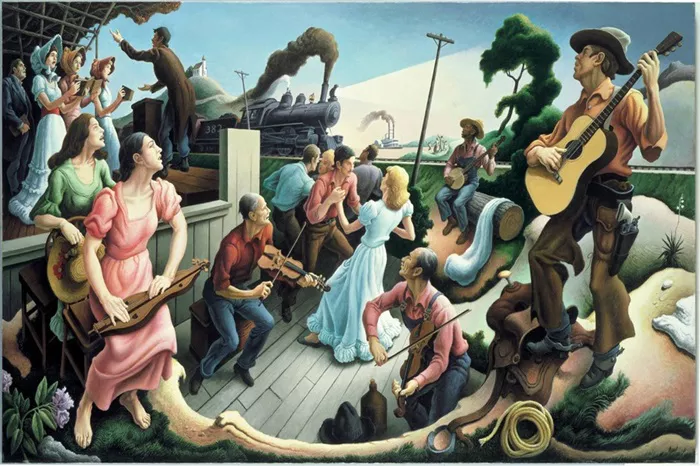Country music, deeply rooted in American culture, has a rich history and a distinctive sound that sets it apart from other genres. Its unique blend of storytelling, melody, and instrumentation captures the hearts of many. This article delves into the ten most important elements that define country music.
1. Storytelling
Narrative Lyrics
Country music is renowned for its storytelling. The lyrics often depict real-life experiences, emotions, and events. These narratives can range from love and heartbreak to hardship and triumph, providing listeners with relatable and heartfelt tales.
Personal Experiences
Many country songs are autobiographical. Artists often draw from their own lives, adding authenticity and depth to their music. This personal touch allows listeners to connect on a deeper level.
2. Traditional Instruments
Guitar
The guitar is a staple in country music. Whether it’s an acoustic guitar for a softer sound or an electric guitar for a more upbeat tune, this instrument is central to the genre’s sound.
Fiddle and Banjo
The fiddle and banjo add a unique twang and rhythm to country music. These instruments contribute to the genre’s distinctive sound and are often featured in solos and instrumental breaks.
3. Vocal Style
Twang
A distinct vocal style, often referred to as a “twang,” is characteristic of country music. This style adds a unique flavor to the songs and sets them apart from other genres.
Harmonies
Harmonies are a crucial element in country music. Many songs feature close harmonies, often between male and female vocalists, enhancing the emotional impact of the lyrics.
4. Themes of Rural Life
Small-Town Life
Country music frequently celebrates small-town life. Songs often depict the simplicity and charm of rural living, highlighting the community’s strong ties and traditional values.
Nature and Outdoors
Nature and outdoor imagery are common in country music. Lyrics often reference landscapes, farming, and the beauty of the countryside, reflecting the genre’s roots in rural America.
5. Honky-Tonk and Dance Rhythms
Upbeat Tempos
Honky-tonk music, with its upbeat tempos and danceable rhythms, is a vital element of country music. This subgenre often features lively tunes perfect for dancing and celebration.
Dance Halls and Bars
Many country songs are inspired by dance halls and bars, where the music is played live, and people gather to dance. These settings influence the energetic and social aspects of the genre.
6. Authenticity
Genuine Emotion
Authenticity is highly valued in country music. Artists are expected to convey genuine emotion through their lyrics and performances, creating a sincere and heartfelt connection with their audience.
Real-Life Stories
The genre thrives on real-life stories and experiences. This authenticity resonates with listeners, who appreciate the honesty and relatability of the songs.
See also: Top 10 Words To Describe Country Music
7. Southern Culture and Values
Family and Faith
Family and faith are central themes in country music. Many songs highlight the importance of familial bonds and religious beliefs, reflecting the genre’s cultural roots in the Southern United States.
Patriotism
Patriotism is another prominent theme. Country music often celebrates American values and heritage, with many songs paying tribute to the nation’s history and traditions.
8. Bluegrass Influence
Fast-Paced Instrumentals
Bluegrass music, with its fast-paced instrumentals and intricate melodies, heavily influences country music. This influence is evident in the genre’s complex guitar and banjo picking styles.
High-Pitched Harmonies
High-pitched vocal harmonies, a hallmark of bluegrass music, are also prevalent in country music. These harmonies add a layer of complexity and beauty to the songs.
9. Influence of Blues and Gospel
Blues Roots
Country music has deep roots in the blues. The genre borrows elements such as the twelve-bar blues structure and emotive vocal styles, blending them into its own unique sound.
Gospel Themes
Gospel music’s influence is also significant. Many country songs incorporate gospel themes and melodies, reflecting the genre’s spiritual and religious connections.
10. Evolution and Adaptation
Modern Influences
Country music continues to evolve, incorporating modern influences from pop, rock, and other genres. This evolution keeps the genre fresh and relevant to contemporary audiences.
Diverse Subgenres
The genre has diversified into various subgenres, such as country pop, country rock, and alt-country. This diversity allows country music to reach a broader audience and remain dynamic.
Conclusion
Country music is a rich and diverse genre, deeply embedded in American culture. Its storytelling, traditional instruments, vocal style, themes of rural life, honky-tonk rhythms, authenticity, Southern values, bluegrass and blues influences, and evolution all contribute to its unique identity. These ten elements are fundamental in shaping the sound and spirit of country music, ensuring its enduring popularity and relevance. Whether you’re a long-time fan or new to the genre, understanding these elements enhances the appreciation of country music’s depth and beauty.
Related topic:
5 Best Places To Watch The Country Music Hall Of Fame 2022
Top 10 Women Who Can Sing Country Music
In Which Country Did Rock Music Originate?

